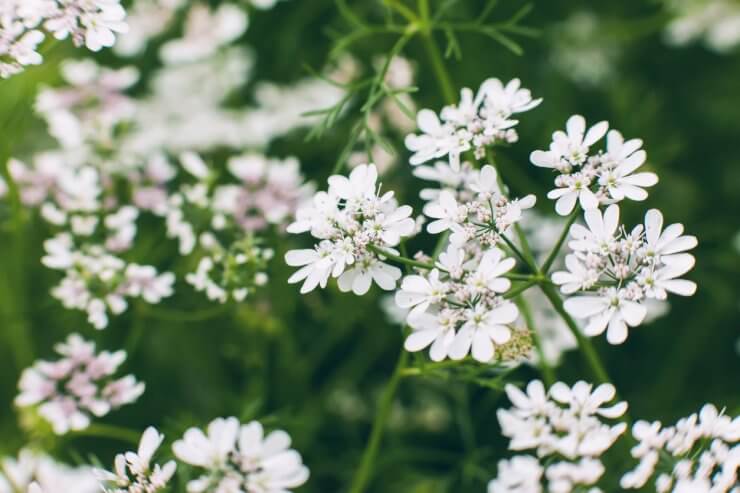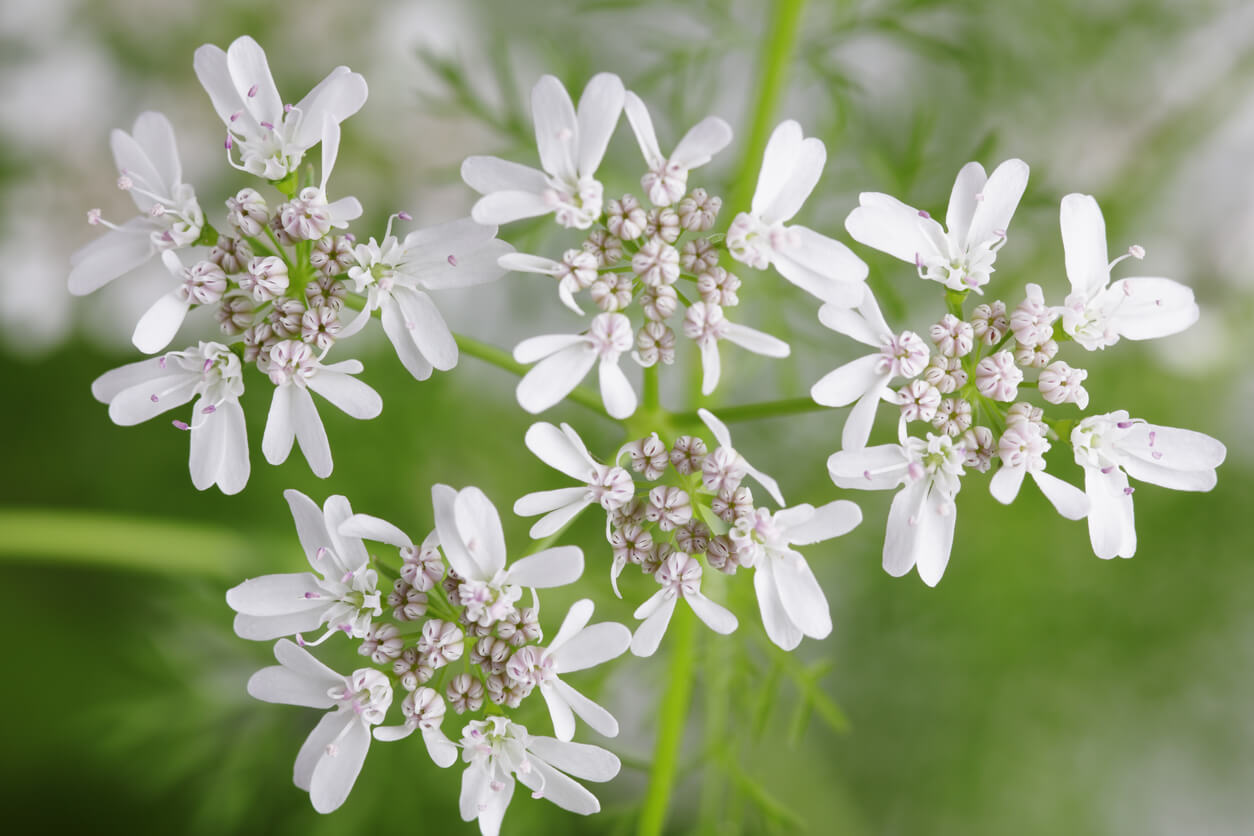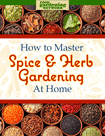
Cilantro shares a long history with humanity. Seeds of the herb were scattered in the tomb of King Tutankhamun. They were found in caves inhabited 8,000 years ago in Israel. The herb appears in ancient texts from Greece and Rome. And while a lot has changed, I’d be willing to bet that if we could look back a few thousand years, we’d find some frustrated gardener wondering what to do about his cilantro bolting.
What exactly does that mean? Why does it happen? Can you avoid it? Does it even matter?
When cilantro bolts, the plant alters its growth. Instead of producing fragrant, flat leaves, the plant moves its energy into producing flowers, which then develop seeds. Generally, this means all that nice flavor you usually get from the leaves is gone. This isn’t necessarily a bad thing. But first, let’s get into the biology just a little bit.
Find out how easy growing spices and herbs can be—indoors or out! Read our FREEBIE How to Master Spice and Herb Gardening at Home right now!

Is your cilantro bolting? Here’s why and what you can do about it
Cilantro is a cool-weather herb. As long as temperatures stay comfortable, you’re good. You can continue to harvest cilantro leaves as you need. But your time is limited once temperatures climb toward the upper 70s and into 80 degrees Fahrenheit. High temperatures push cilantro to create seeds. This is your cilantro bolting. It ensures the survival of the species.
If you want to continue harvesting and enjoying cilantro leaves, you need to determine how to prevent this process. Once you notice flowers appearing, the cilantro bolting process is underway, and the cilantro leaves lose their flavor.
There are some benefits to letting your cilantro bolt, however. Those seeds that the flowers produce are known as coriander. Collect them, and you have a nice fresh spice to add to your cooking arsenal. Alternatively, you can just let the seeds drop on the ground, and the cilantro will reseed itself and, with a bit of luck, reappear again once the weather cools down.
If you aren’t ready for that, there are some ways to prevent your cilantro bolting.
- Plant a slow-bolting variety, such as Calypso. These hybrid varieties have been developed to withstand warmer temperatures.
- Grow your cilantro early in the spring or in the fall so that you can extend your season.
- Give your cilantro some shade. Since it’s heat that starts the cilantro bolting process, a little shade might keep the temperature down just enough.
- Start seeds indoors. This is a great way to extend the growing season for many herbs and vegetables.
- Use a cold frame. If you want an early start on the season but don’t want to start your seeds indoors, use a cold frame. Planting in a cold frame could add several extra weeks to your growing season.
- Mulch! You know I couldn’t resist a chance to throw this in. Mulch helps keep the soil cool, and it helps retain moisture.
- Grow cilantro in a container. If you’re worried that your in-ground or raised bed garden will get too warm, grow your cilantro in a container so you can move it to a cooler location once temperatures start to climb.
Have you had issues with cilantro bolting? What did you do about it?
Note: Food Gardening Network contains links to affiliate websites, including Amazon and Rakuten Affiliate Network, and we may receive a commission for any eligible purchases made by you through links on this page. Any reviews are based on honest reviews of the products.
Find out how easy growing spices and herbs can be—indoors or out! Read our FREEBIE How to Master Spice and Herb Gardening at Home right now!




